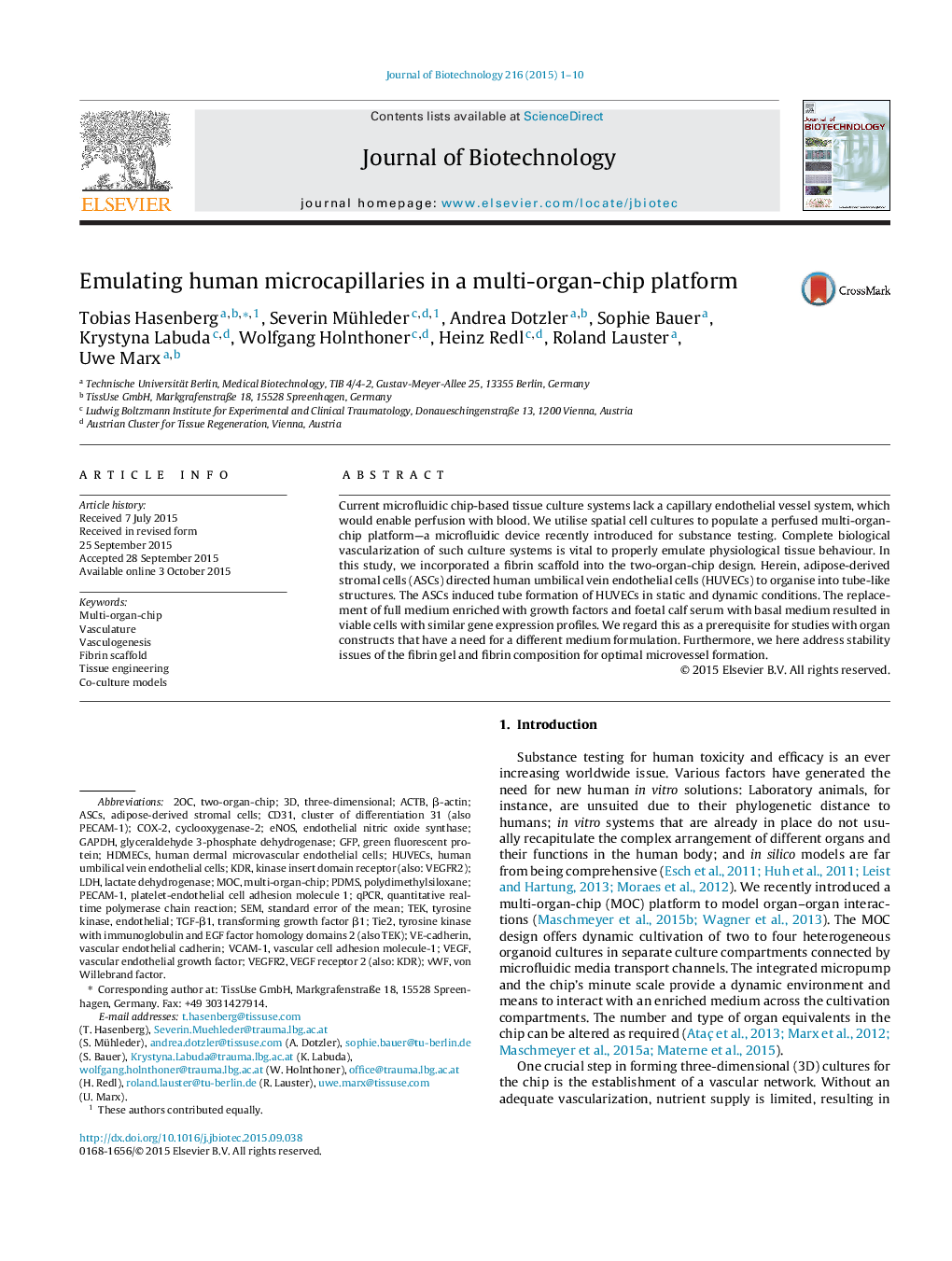| Article ID | Journal | Published Year | Pages | File Type |
|---|---|---|---|---|
| 22788 | Journal of Biotechnology | 2015 | 10 Pages |
•Establishment of a vascular network in a perfused multi-organ-chip.•Optimal fibrinogen concentrations for microvessel formation.•Evidence for self-maintenance of co-cultures in basal medium conditions.
Current microfluidic chip-based tissue culture systems lack a capillary endothelial vessel system, which would enable perfusion with blood. We utilise spatial cell cultures to populate a perfused multi-organ-chip platform—a microfluidic device recently introduced for substance testing. Complete biological vascularization of such culture systems is vital to properly emulate physiological tissue behaviour. In this study, we incorporated a fibrin scaffold into the two-organ-chip design. Herein, adipose-derived stromal cells (ASCs) directed human umbilical vein endothelial cells (HUVECs) to organise into tube-like structures. The ASCs induced tube formation of HUVECs in static and dynamic conditions. The replacement of full medium enriched with growth factors and foetal calf serum with basal medium resulted in viable cells with similar gene expression profiles. We regard this as a prerequisite for studies with organ constructs that have a need for a different medium formulation. Furthermore, we here address stability issues of the fibrin gel and fibrin composition for optimal microvessel formation.
